 |
BusTalk
A Community Discussing Buses and Bus Operations Worldwide!
|
| View previous topic :: View next topic |
| Author |
Message |
Mr. Linsky
BusTalk's Offical Welcoming Committee

Joined: 16 Apr 2007
Posts: 5071
Location: BRENTWOOD, CA. - WOODMERE, N.Y.
|
 Posted: Tue Aug 26, 2008 11:39 pm Post subject: Posted: Tue Aug 26, 2008 11:39 pm Post subject: |
 |
|
Pictured below is a 1947 GM Coach Model TDH 4507 and one of twenty to have been numbered between 300 and 319 and delivered to North Shore Bus Company of Flushing, New York in August of that year.
The bus is pictured at the North Shore facility but not in the familiar gun metal gray livery of the company. In fact, it carries the paint scheme of the then City of New York Board of Transportation replete with a city BofT seal under the passenger windows.
The fact that there are as yet no fleet numbers or license plates indicates that the bus may have just been delivered from the factory.
The reason for this rather unusual circumstance came about because between the time North Shore ordered the buses, which by the way were the first for them from GM since the early thirties, and the time of delivery they went out of business and the city took over the operation.
A brief history of North Shore;
North Shore Bus Company, like so many other suburban New York City operations, began sometime in the 1920’s with the takeover of financially strapped street car lines in north east Queens serving Whitestone, Douglaston and Bayside from Flushing (precursors of today’s Q 12, Q 13 and Q 15 routes).
The 1930’s brought the company good fortune with the expansion of existing lines, the acquisition of new routes and the ultimate award of franchises to service the Jamaica corridor including those formerly operated by both Schenck Transportation and Bee Line (L.I.).
Unfortunately, a shortage of needed new equipment and parts during World War II and a refusal by the city to increase fares beyond 5 cents led the company to turn in its recently renewed franchises in 1947.
Upon the takeover of North Shore operations, the City of New York Board of Transportation created the Queens Bus Division.
Many thanks to Vincent A. Syrek for his invaluable information.
Mr. Linsky – Green Bus Lines, Inc., Jamaica, NY
 |
|
| Back to top |
|
 |
Mr. Linsky
BusTalk's Offical Welcoming Committee

Joined: 16 Apr 2007
Posts: 5071
Location: BRENTWOOD, CA. - WOODMERE, N.Y.
|
 Posted: Thu Aug 28, 2008 4:50 pm Post subject: Posted: Thu Aug 28, 2008 4:50 pm Post subject: |
 |
|
Pictured below is an early transit bus operated by the New York Railways Company.
By the ‘solid’ tires and the ‘lantern’ type headlights, my most educated guess would be that the vehicle is a mid twenties model with a chassis possibly by either Yellow Coach or Fageol – another well known supplier of underpinnings for transit bus bodies at the time.
Notice that even as far back as the twenties ‘double stream’ front doors were available and it appears as though they may even have been actuated pneumatically or hydraulically!
Of even further note is the styling of the roof which is reminiscent of rail road passenger car design of the era.
I would also have to say that the solid tires could not have added much to a comfortable ride for passengers!
Some history of New York Railways Company;
The company, which reorganized in 1925 as the New York Railways Corporation, and was also was known as the ‘Green Lines’ (no relation to Green Bus Lines) was the largest street railway operation in Manhattan (NY) from 1911 to 1936 when what remained of its routes were converted to buses.
NYRC’s chief competitor, the Third Avenue Railway (a/k/a TARS) continued trolley operations well into the late forties.
The bus operations that eventually replaced both companies are now part of the Metropolitan Transportation Authority.
An interesting aside that this writer only just discovered; mergers, acquisitions and hostile takeovers were commonplace among transit companies in the early years and especially so in New York City.
In 1933, the fledgling Green Bus Lines (who later became a private operator of note in southern Queens) was awarded temporary franchises for six important Manhattan cross town routes.
Sometime between then and 1936 when those franchises were lost, the New York Railways Corporation did attempt a hostile takeover of the company but failed.
In the Green Bus Lines booklet also pictured below the company called upon its passenger base to help in thwarting the acquisition.
BTW; the photo montage on the cover of the booklet depicts several copies of the same grouping of a number of Green Line's 1933 Macks.
Bus photo from ebay.
Mr. Linsky – Green Bus Lines, Inc., Jamaica, NY
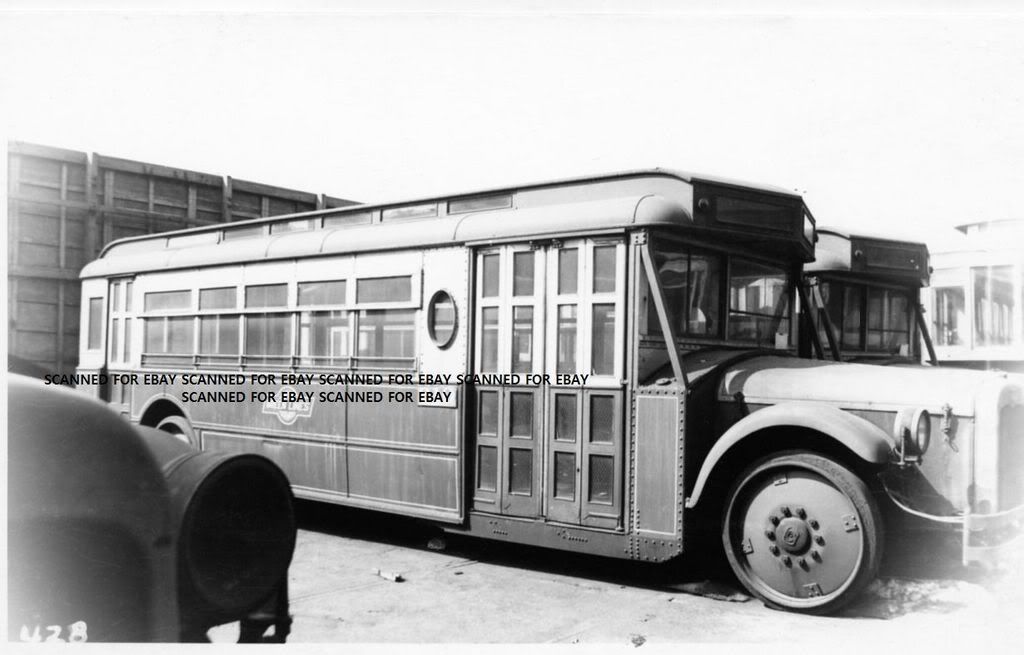
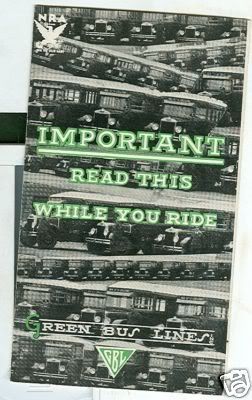 |
|
| Back to top |
|
 |
Cyberider

Joined: 27 Apr 2007
Posts: 501
Location: Tempe, AZ
|
 Posted: Fri Aug 29, 2008 1:58 pm Post subject: Posted: Fri Aug 29, 2008 1:58 pm Post subject: |
 |
|
That's an interesting bus body, Mr. L. I've never seen one that resembled a railway car so much. Wonder what it felt like when those solid rubber tires hit a pot hole? I wonder the same thing on these new cars with huge wheels and skinny tires!  |
|
| Back to top |
|
 |
Mr. Linsky
BusTalk's Offical Welcoming Committee

Joined: 16 Apr 2007
Posts: 5071
Location: BRENTWOOD, CA. - WOODMERE, N.Y.
|
 Posted: Fri Aug 29, 2008 5:42 pm Post subject: Posted: Fri Aug 29, 2008 5:42 pm Post subject: |
 |
|
Dave,
It must have been one heck of a ride on those buses especially on the streets of New York in the twenties which were mostly cobble stone!
I've looked through all of my copies of Motor Coach Age to try to determine what kind of bus it was and I have subsequently found out that the company did prefer Yellow Chassis.
But, in looking through the archives, I have found no other bus with a roof detail resembling a rail road car, and I think they had them made that way because they were a railway oriented company and liked the look!
I would never have those low profile (if that's what you call them) tires on my cars.
Aside from the fact that they can't possibly give you the cushioned ride that regular tires do, I believe they might be more susceptible to damage by sharp objects although the manufacturers deny that.
'To each his own'!
Mr. Linsky - Green Bus Lines, Inc., Jamaica, NY |
|
| Back to top |
|
 |
Mr. Linsky
BusTalk's Offical Welcoming Committee

Joined: 16 Apr 2007
Posts: 5071
Location: BRENTWOOD, CA. - WOODMERE, N.Y.
|
 Posted: Sun Aug 31, 2008 4:59 pm Post subject: Posted: Sun Aug 31, 2008 4:59 pm Post subject: |
 |
|
Pictured below with courtesy of the New York Public Library are a couple of rare factory photos of both the upper and lower levels of Yellow Coach model 720 and 735 (double deckers) used by both Fifth Avenue Coach and its affiliate Chicago Motor Coach from the mid thirties until the early fifties.
Notice the 'craftsmanship' and the materials that are absent in today's coaches including solid brass window frames and chromium passenger rails.
Also of note is the placement and fashoning of the staircase, and the fact that the same young ladies posed for both pictures.
The 720's and 735's were exactly alike in every respect with the exception of the roof which was slightly lower on the 720 (also shown) to negotiate under railroad tressles in Chicago and the Jackson Heights to Manhattan route in New York.
Mr. Linsky - Green Bus Lines, Inc., Jamaica, NY
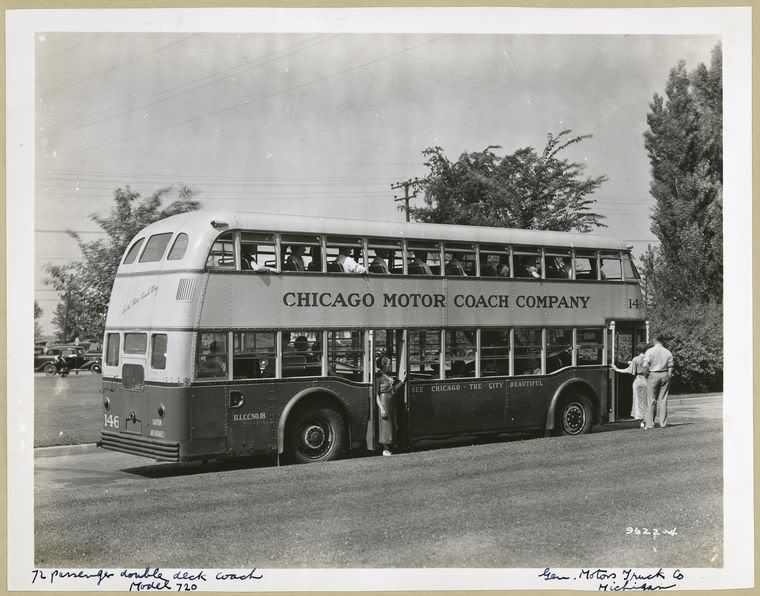
Lower deck
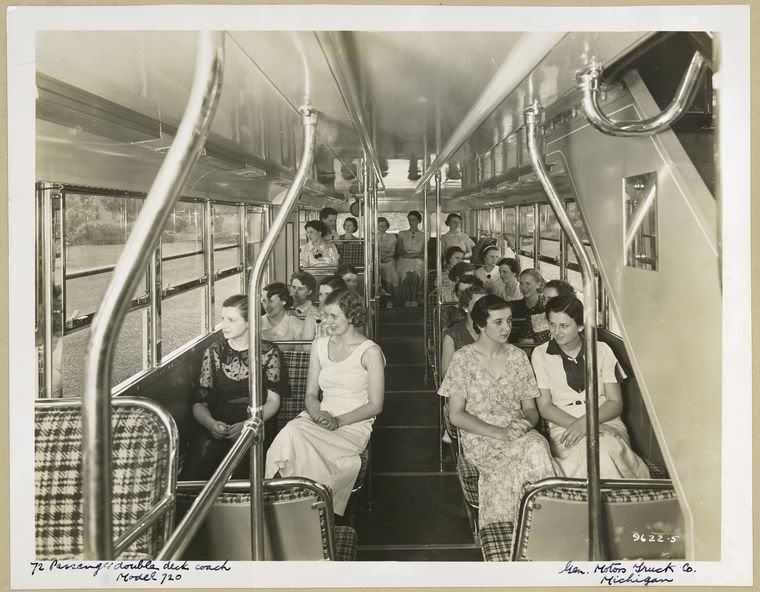
Upper deck
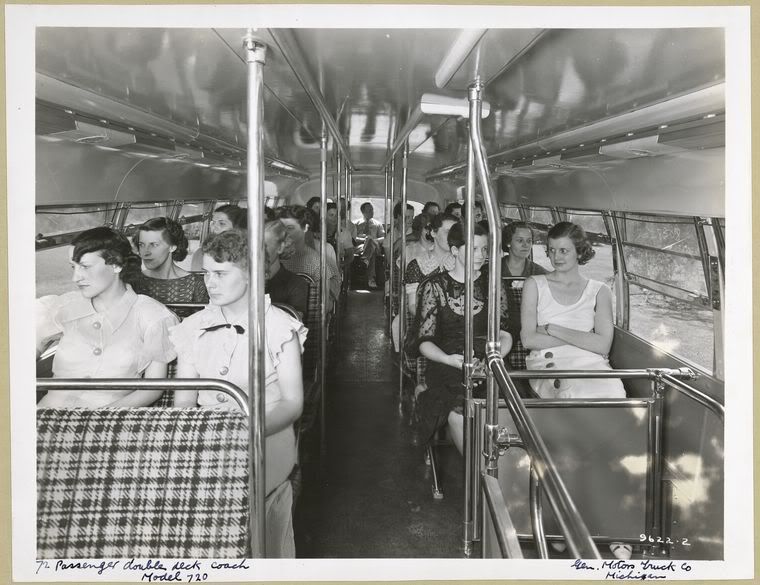 |
|
| Back to top |
|
 |
Mr. Linsky
BusTalk's Offical Welcoming Committee

Joined: 16 Apr 2007
Posts: 5071
Location: BRENTWOOD, CA. - WOODMERE, N.Y.
|
 Posted: Tue Sep 02, 2008 1:32 am Post subject: Posted: Tue Sep 02, 2008 1:32 am Post subject: |
 |
|
Pictured below in a factory pose is a Yellow Coach trolley bus Model 729 being readied for delivery and one of 356 built exclusively for Public Service Coordinated Transport of New Jersey between 1935 and 1937.
The 729, designed in collaboration with Public Service engineers, was an ‘All Service Vehicle’ (ASV) powered by a 450 cubic inch transversely mounted gasoline engine that drove a General Electric generator instead of a geared transmission and distributed power to two traction motors placed ahead of the rear axle.
Some interesting facts about early trolley coaches; to reduce the chances of severe shock to passengers, doors and interior passenger rails where fashioned of wood and all roof mounted electrical equipment was heavily insulated.
Additionally, any aluminum frame and roof supports for the pole structure were changed to steel.
The trolley bus idea caught on rapidly and is still a viable alternative with modern versions in heavy use especially in hilly cities such as San Francisco.
However, in New Jersey’s case, the end of World War II saw both the advent of larger Diesel buses coming into service combined with declining ridership which led to the end of all electric operations by June of 1948.
Photos courtesy of the New York Public Library.
Mr. Linsky – Green Bus Lines, Inc., Jamaica, NY
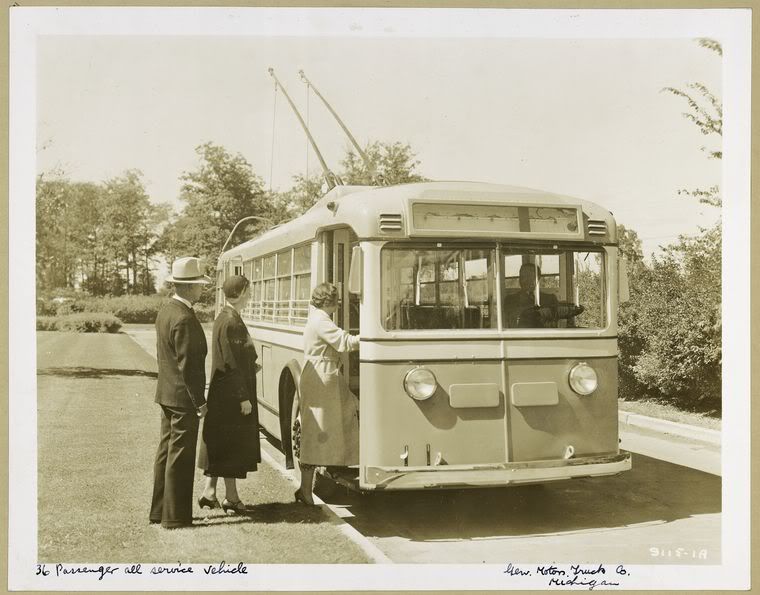
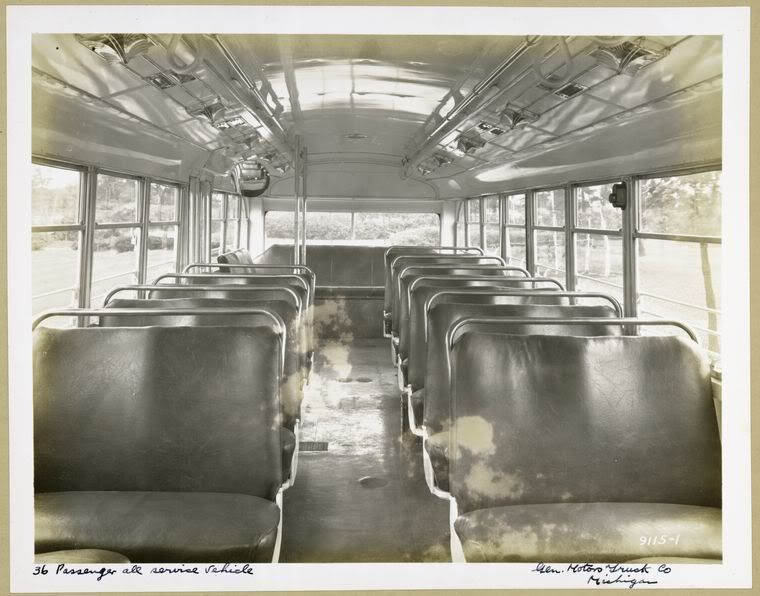 |
|
| Back to top |
|
 |
Cyberider

Joined: 27 Apr 2007
Posts: 501
Location: Tempe, AZ
|
 Posted: Tue Sep 02, 2008 8:54 am Post subject: Posted: Tue Sep 02, 2008 8:54 am Post subject: |
 |
|
| Thanks for posting the info and great photos on the Yellow Double-deckers and ASV's, Mr. Linsky. Those are the best photos of the DD's I've seen. Too bad they don't make them like they used to! |
|
| Back to top |
|
 |
Mr. Linsky
BusTalk's Offical Welcoming Committee

Joined: 16 Apr 2007
Posts: 5071
Location: BRENTWOOD, CA. - WOODMERE, N.Y.
|
 Posted: Thu Sep 04, 2008 12:49 am Post subject: Posted: Thu Sep 04, 2008 12:49 am Post subject: |
 |
|
‘INDIANA BUSES’
I have often mentioned ‘Indiana’ buses as playing a pivotal role in the history of Green Bus Lines (NY) but, until now, never gave that manufacturer a fair shake here in the ‘Bus Nostalgia’ pages.
A brief history of the Indiana Truck Company;
The early twentieth century was a time of great development in the automotive industry. Across America and around the world, assembly lines were producing vehicles that were changing virtually everyone’s lives.
One company that enjoyed relative prosperity during this time frame was the Indiana Truck Company. Founded before the turn of the twentieth century as a bedstead manufacturer in Marion, Indiana, the business turned to experimental truck chassis making in 1910.
Production was boosted by the need for military trucks and buses in World War I, and the company boomed in the 1920s along with the nation's economy and the growth of highways, before being acquired by Brockway Motor Trucks of Cortland, New York in 1927 and then by the White Motor Company of Cleveland in 1933.
White was impressed with the array of light-duty bus chassis that Indiana had developed years before and continued the line under the Indiana name as a low priced alternative to White’s own heavy duty models, and about 200 were produced at White’s Cleveland plant between 1933 and 1936.
The demise of the Indiana division came in 1936 when financial difficulties led White to reorganize the company.
It is interesting to note that of the 200 Indiana chassis replete with Bender coach bodies built at Cleveland, 50 24 passenger model 14C’s went to Green Bus Lines in 1933 for service in Manhattan and were numbered G350 to G399.
Pictured below is a 20 passenger model 14B operating for the Cleveland Railway Company.
Historic notes thanks to Toposh Rudra with photo courtesy of the Motor Bus Society.
Mr. Linsky – Green Bus Lines, Inc., Jamaica, NY
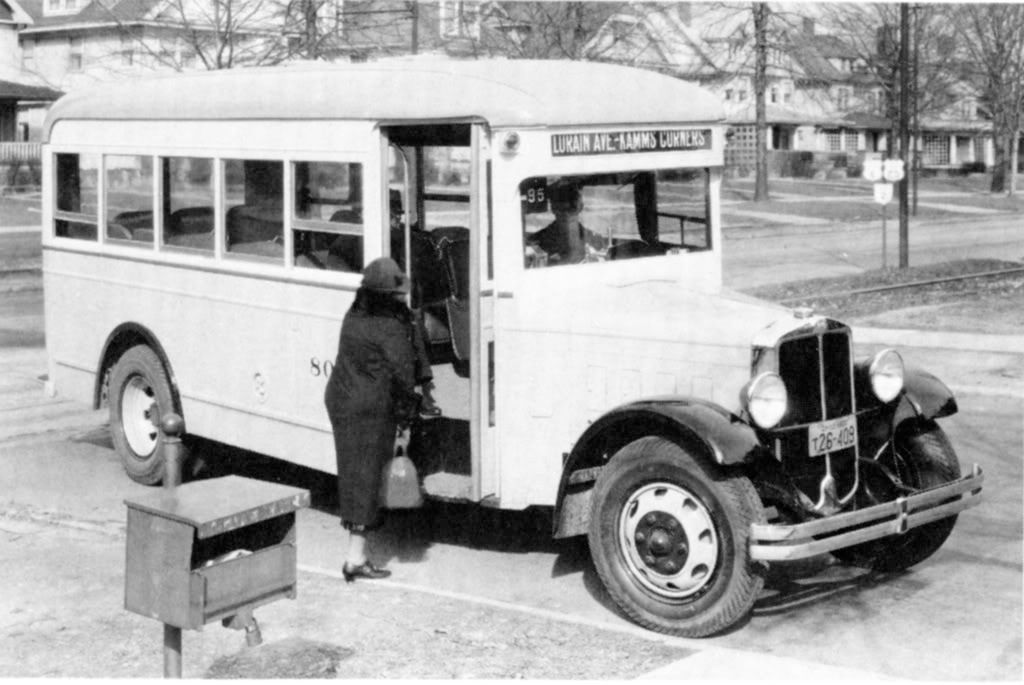 |
|
| Back to top |
|
 |
Mr. Linsky
BusTalk's Offical Welcoming Committee

Joined: 16 Apr 2007
Posts: 5071
Location: BRENTWOOD, CA. - WOODMERE, N.Y.
|
 Posted: Sun Sep 07, 2008 2:11 am Post subject: Posted: Sun Sep 07, 2008 2:11 am Post subject: |
 |
|
CITIZENS RAPID TRANSIT (VA)
Posing for the camera in downtown Newport News, Virginia sometime in 1976 is fleet number 201 – a 1960 Mack ‘new look’ Model C-47-DT then operating for Pentran – the successor to Citizens Rapid Transit Company of Hampton, Virginia.
The ‘New Look’ Mack Bus which made its appearance in 1959 was merely a standard version of the company’s post war line with a new front end designed by Niagara Frontier Transit System of Buffalo New York and was offered as an extra-cost option under license from NFT.
Only 219 ‘new looks’ were built before the end of all transit bus production by Mack in 1960 with the very last order of 75 units going to San Juan, Puerto Rico.
Among New York metropolitan area operators, Yonkers Railroad Company, Triple Cities Traction Company and Bee Line L.I. (also pictured below) each purchased five of the advanced model.
Some interesting facts about Citizens Rapid Transit Company (CRTC);
It was a rather odd transit system when it came to equipment.
In the 1950's and 1960's almost every transit company in the country went over to GM diesel buses.
But CRTC favored MACK and bought them exclusively until the end of bus building by that company in 1960. Subsequently, CRTC opted for used Mack’s from all over the country.
Apparently upon pressure from Newport News and/or Hampton for new buses in the 1960’s, CRTC bought three sets of Flxibles between 1968 and 1969, and they were unusual in that they came equipped with Cummins V-8 engines and Spicer automatic transmissions.
PENTRAN (after takeover of CRTC) had the distinction of having the last MACK buses in revenue service in the country through 1977.
PENTRAN, was formerly the public transit service that covered the cities of Hampton and Newport News, Virginia from 1975 to 1999, both located within the Hampton Roads metropolitan area, on the Virginia Peninsula.
In 1999 PENTRAN merged with Tidewater Regional Transit to form Hampton Roads Transit.
CRTC photo (top), and some information courtesy of Bruce Korusek.
Bee Line photo (bottom) courtesy of BusTalk Gallery.
Mr. Linsky – Green Bus Lines, Inc., Jamaica, NY

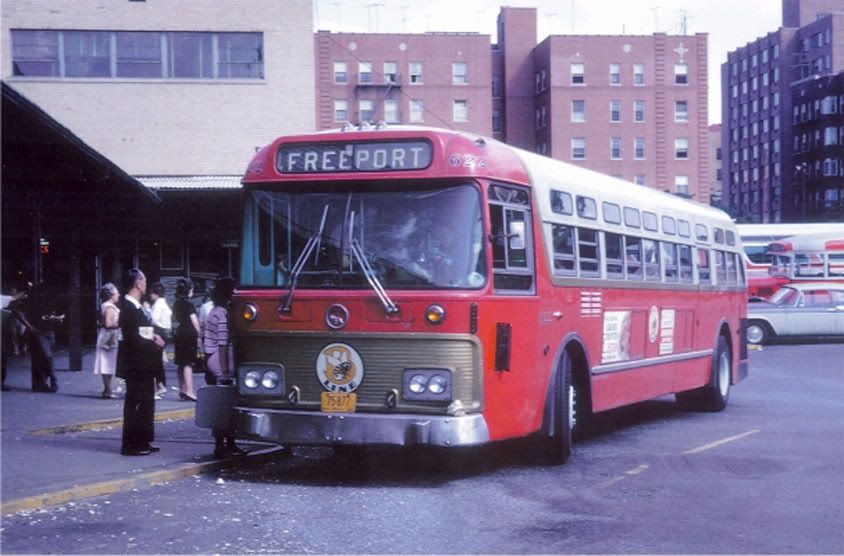 |
|
| Back to top |
|
 |
Mr. Linsky
BusTalk's Offical Welcoming Committee

Joined: 16 Apr 2007
Posts: 5071
Location: BRENTWOOD, CA. - WOODMERE, N.Y.
|
 Posted: Wed Sep 10, 2008 4:51 pm Post subject: Posted: Wed Sep 10, 2008 4:51 pm Post subject: |
 |
|
'FIFTH AVENUE'S TYPE A'
Pictured below and contained within a magazine ad for Thermoid brake linings is fleet number 916 – a late teens model Type ‘A’ Double Decked coach built by and operated for the Fifth Avenue Coach Company of New York.
The Fifth Avenue Coach Company, incorporated in 1896, was a horse-drawn omnibus line originally founded in 1885 as the Fifth Avenue Transportation Company (Ltd.) to discourage the laying of trolley tracks on New York’s most fashionable two-way thoroughfare.
Battery operated vehicles were quickly abandoned after their introduction in 1900 as a result of their expense and inefficiency, and horse-drawn London-type omnibuses continued to be used until 1907, when they were replaced by gasoline-driven motor coaches with French engines and London chassis.
The birth of the Type ‘A’ Double Decker;
In 1916 the French army commandeered 25 of the London chassis for which Fifth Avenue already had bodies on order and, when no manufacturer could be found to take on the task, the company purchased the necessary chassis components and began production of the now famous Type ‘A’ Double Decker’s in their own upper Manhattan shops.
Designed by George A. Green of Chicago and adapted from the ‘B’ Type London General, the 44 passenger Type A produced between 1917 and 1921 weighed in at 16,000 pounds and was powered first by Waukesha and then by Moline-Knight gasoline engines.
As buses became more efficient and the city grew larger, the fleet expanded; eventually some 275 Type A two man double-deckers were constructed, and a few were also sold to other operators. The basic European design was modified over the years with storage batteries instead of acetylene for lighting, exhaust-pipe heating, illuminated destination signs, copper-tube radiators, and enclosed driver's cabs.
When the company's former general manager endeavored to establish a similar type of boulevard bus operation in Detroit in 1919, he found that the Type A was too high for that city's clearances. Thus, starting in 1921, Fifth Avenue produced a Type L (Low), 55-passenger double-decker distinguished by an under slung drive shaft. Production of this model and a larger Type 2L with 64 seats reached over 300. A single-deck bus designated "Type J" was also built starting in 1923 and about 200 had been constructed (mostly for sale to other operators, especially Detroit) by the time Fifth Avenue sold its bus building business to Yellow Coach in 1925.
As early as 1923, the best features of the Type A and L had been combined with those of Chicago's Type K to provide Yellow Coach with the initial specifications for its own Type Z two level coach exclusively for use by Fifth Avenue and Chicago Motor Coach which were commonly owned at that time.
Fifth Avenue Coach Co. continued to build and rebuild bus bodies for its own use until 1930 and extensively rebuilt its buses in its sizable shops into the modern era.
Mr. Linsky – Green Bus Lines, Inc., Jamaica, NY
 |
|
| Back to top |
|
 |
Mr. Linsky
BusTalk's Offical Welcoming Committee

Joined: 16 Apr 2007
Posts: 5071
Location: BRENTWOOD, CA. - WOODMERE, N.Y.
|
 Posted: Sat Sep 13, 2008 2:52 am Post subject: Posted: Sat Sep 13, 2008 2:52 am Post subject: |
 |
|
'BERKSHIRE STREET RAILWAY COMPANY'
Pictured below is fleet number 126 – a 1948 Beaver Metropolitan Coach Company Model B-35-PT operating for the Berkshire Street Railway Company of Pittsfield, Massachusetts and seen at their garages sometime in the 1950’s.
Beaver, a common site on the streets of Western Pennsylvania and southern New England, was a small manufacturer founded in 1933 and based in Beaver Falls, Pennsylvania.
After a failed attempt at the making of over the road equipment Beaver’s efforts turned to small transits with the introduction of the Metropolitan model in 1936 in a 31 and 35 passenger version.
During the following year, the Public Service Coordinated Transport of New Jersey looked at a demo of the metropolitan design and urged GM’s Yellow Coach to manufacture a bus for them based on the concept which resulted in the Yellow model 733. The decision was made to go with Yellow as they could produce the buses faster and had better factory service.
Meanwhile, constant improvements were being made to Beaver’s designs during this period including different chassis and engines, widening the bus as well as making it longer and finally in 1938 the introduction of the rear-engine configuration.
The company did fairly well through the late thirties and forties with the pictured B-35-PT model which was very popular among small operators.
During the early 50's orders began to dry up for Beaver with GM’s big push into the medium duty field and their death blow came in 1956 when the Beaver Falls plant was inundated by two floods. The cost of resuming operation would have been too great so the company closed down. A former employee acquired the spare parts supply and continued to sell parts and service advice to the properties that operated Beavers buses.
Only three Beaver coaches are known to survive today in some state of preservation with two in Pennsylvania and one in New Jersey.
The Berkshire Street Railway Company, which was one of a number of converted trolley operations owned by the New York, New Haven and Hartford Railroad in southwestern New England, operated out of Pittsfield, Massachusetts and serviced a corridor on the western end of the state between Connecticut and Vermont.
By 1962, the railroad had divested itself of all bus holdings and Berkshire was sold and resold until its routes finally became part of the newly formed Berkshire Transit Authority in 1974.
On a personal note, I visited my aunt and uncle in Pittsfield many times as a youngster and had the opportunity to ride what was a potpourri of Berkshire buses including # 163 ACF-Brill of the same era also pictured below (shown heading south on North Street in Pittsfield).
Photos from the Motor Bus Society.
Mr. Linsky – Green Bus Lines, Inc., Jamaica, NY
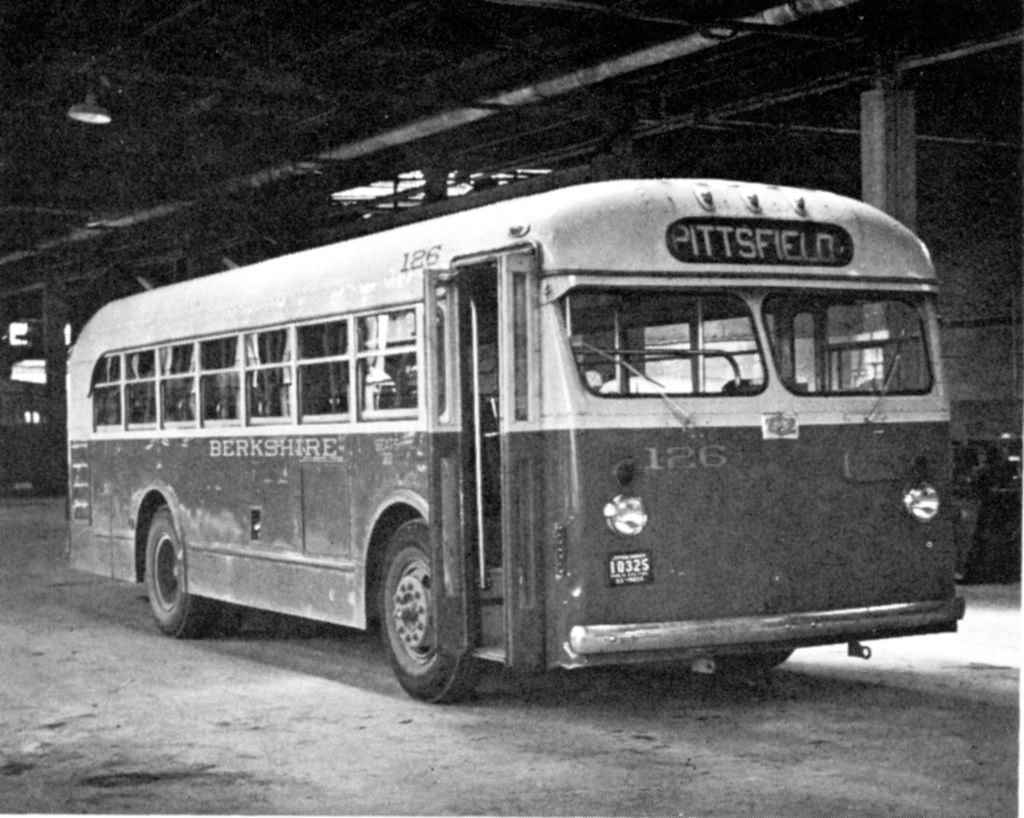
 |
|
| Back to top |
|
 |
Mr. Linsky
BusTalk's Offical Welcoming Committee

Joined: 16 Apr 2007
Posts: 5071
Location: BRENTWOOD, CA. - WOODMERE, N.Y.
|
 Posted: Thu Sep 18, 2008 12:45 am Post subject: Posted: Thu Sep 18, 2008 12:45 am Post subject: |
 |
|
‘THE ACF C44 OF QUEENS-NASSAU TRANSIT LINES’
Pictured below in two snowy day poses is fleet # 103 – a 1947 ACF-Brill Model C-44 (ser# 292) and one of 20 (101 to 120) delivered to Queens Nassau Transit Lines of Flushing, New York in late winter of that year.
The American Car and Foundry Company and the Brill Corporation (both extremely successful transportation equipment oriented manufacturers) merged to become ACF-Brill in 1944 and, upon the end of the war, returned to building buses.
Two models were offered; the ‘C-36’ 36 passenger coach powered by a Hall Scott amidships pancake engine with a wheelbase of 198 ½ inches and weighing in at 12,000 lbs., and a 44 passenger version designated as the C-44 with identical specifications except for a slightly longer wheelbase.
The ACF’s were said to have the most comfortable driver’s seats of any transit bus of the era. They were also said to have let out a symphony of backfiring when you eased up on the gas pedal, were nearly immobile at climbing hills with people aboard, and virtually impossible to stop once you finally got them running......still, nearly forty years after the last of them were retired passengers still fondly recall the ACF buses as being among their favorites.
While prewar ACF buses were considered to be well designed and built for reliability and long service, devout customers found that the post war models no longer met those attributes and few reorders occurred.
ACF-Brill ceased bus manufacture in 1950 with a total of only 2,635 postwar models sold of which 1087 were C44’s.
Queens Nassau Transit Lines (later known as Queens Surface Corporation) based in Flushing, was the largest privately owned transit company in New York City and one of the ten largest in North America. The company provided express bus service from Queens to Manhattan and local service in Queens to over 80,000 daily riders and employed more than 700 drivers, mechanics and office staff.
Founded on January 26, 1937, in a franchise agreement between Queens/Nassau Transit Lines, Inc. and the City of New York, the company was granted permission to maintain and operate motor omnibuses on certain routes in Queens.
Since then the company had received over a dozen honors, including both the New York Cares Award and the Transit Authority Emerald Society Award.
Queens Surface was assimilated into the MTA Bus Division of the Metropolitan Transportation Authority along with six other private bus lines in 2006.
Photos courtesy of Vince A. Syrek of GMOldLookBus (top) and Jay Rogers (bottom).
Mr.Linsky – Green Bus Lines, Inc., Jamaica, NY
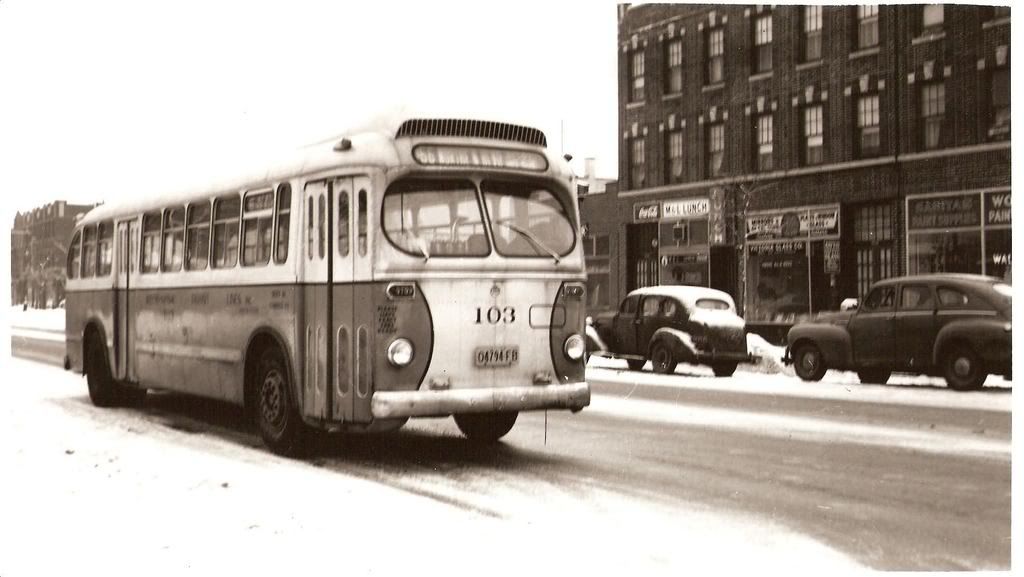
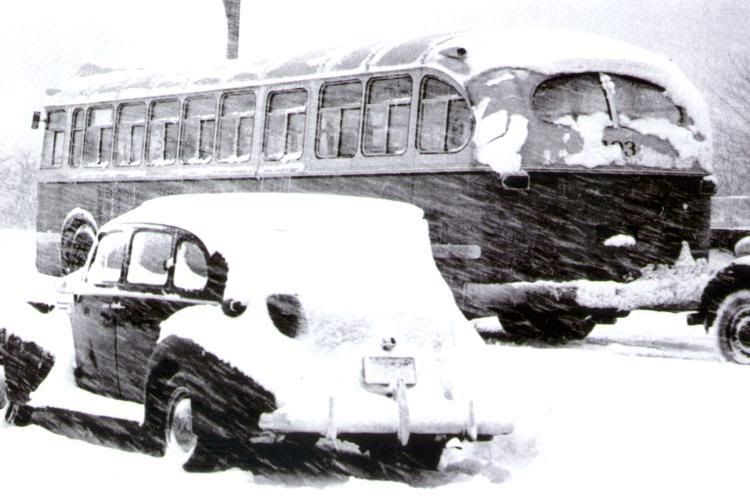 |
|
| Back to top |
|
 |
Mr. Linsky
BusTalk's Offical Welcoming Committee

Joined: 16 Apr 2007
Posts: 5071
Location: BRENTWOOD, CA. - WOODMERE, N.Y.
|
 Posted: Fri Sep 19, 2008 7:28 pm Post subject: Posted: Fri Sep 19, 2008 7:28 pm Post subject: |
 |
|
FIFTH AVENUE’S OPEN TOP MODEL Z’
Pictured below is fleet number 1220 – a 1930 Yellow Coach Model Z-BH-602 (ser# 121) open topped 70 passenger double decker operated by the Fifth Avenue Coach Company of New York.
The Model ‘Z’ (as Yellow coined it) chassis was among the first truly reliable drive trains in the industry and the first of Yellow manufacture to be used by Fifth Avenue to construct their own custom bodies on.
The open tops were a very popular tourist attraction along Fifth Avenue during the summer months but, because the company deemed them as impractical to maintain and store for use only a few weeks per year, many were eventually converted to enclosed versions and most operated until well after the war.
The photo was taken at the Southampton Automotive Museum in Southampton, New York sometime in the sixties.
Rumor has it that upon the closing of the Museum in the late sixties # 1220 was moved Harrah’s Museum in Reno Nevada but there is no record on that.
Several of these coaches have been preserved including 1207, 1212, 1234, 1235, 1263 (also shown below and now in NYMTA collection) and 1272.
The lower photo of 1263 was taken in Reno before it was returned to New York.
#1220 photo credit to bus.nycsubway.org
#1263 photo credit to BusTalk Gallery
Mr. Linsky – Green Bus Lines, Inc., Jamaica, NY
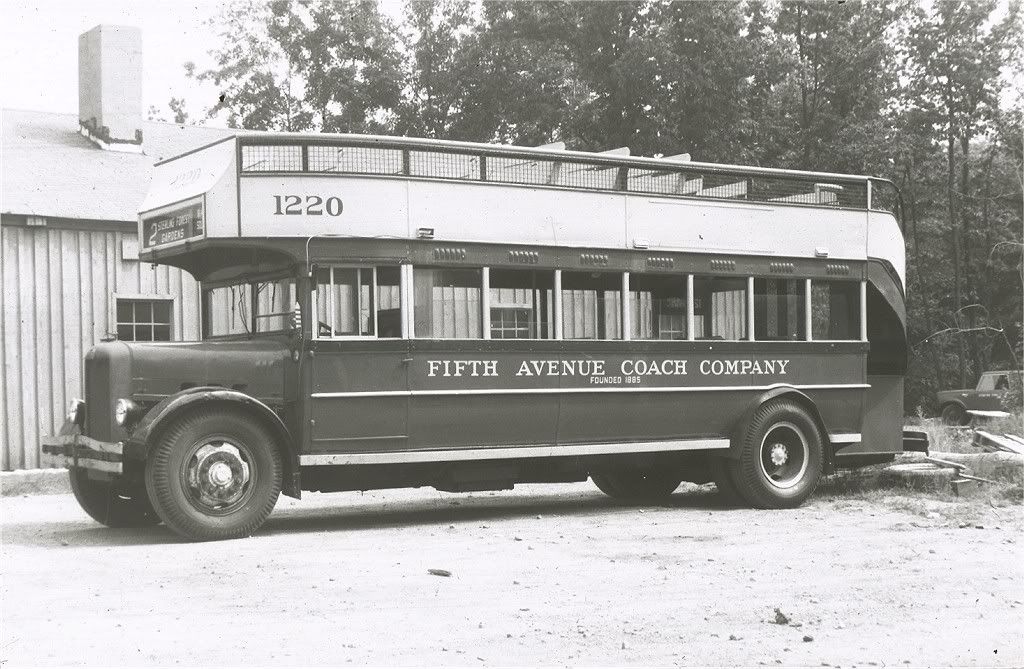
 |
|
| Back to top |
|
 |
Mr. Linsky
BusTalk's Offical Welcoming Committee

Joined: 16 Apr 2007
Posts: 5071
Location: BRENTWOOD, CA. - WOODMERE, N.Y.
|
 Posted: Sat Sep 20, 2008 4:54 pm Post subject: Posted: Sat Sep 20, 2008 4:54 pm Post subject: |
 |
|
Some notes of interest that can be seen on Fifth Avenue's number 1220 (pictured again below);
Because this bus was what was known as a 'two-man' operation with its only entry to either level at the rear end, a special driver's entry door was installed at the driver's seat side.
You may also notice that the chromium radiator housing has been painted over in black and was probably done so to make the bus less reflective in the event of enemy bombing attacks during World War II.
Mr. Linsky - Green Bus Lines, Inc., Jamaica, NY
 |
|
| Back to top |
|
 |
Mr. Linsky
BusTalk's Offical Welcoming Committee

Joined: 16 Apr 2007
Posts: 5071
Location: BRENTWOOD, CA. - WOODMERE, N.Y.
|
 Posted: Sun Sep 28, 2008 12:13 am Post subject: Posted: Sun Sep 28, 2008 12:13 am Post subject: |
 |
|
STATEN ISLAND COACH COMPANY
Thanks to the New York Public Library’s vast collection of New York City street scenes, I have come up with some interesting pictures of the ACF’s of the Staten Island Coach Company.
It appears that the company was a major player in the borough with a history that may go back as far as the twenties but very little has been written about it except for the fact that at sometime just after World War II SICC was sold to the Isle Transportation Corporation – an employee owned operator which was almost immediately taken over by the city’s Board of Transportation.
In fact, thirty-five White model 798’s that had been ordered by Isle to replace SICC’s aging ACF fleet were delivered to the city in the same manner as North Shore Bus Company’s 1947 order for twenty GM TDH 4507’s were.
The pictured buses in various poses around Staten Island are ACF’s popular H-12-S models from the early thirties powered by the company’s famous amidships under floor mounted Hall-Scott gasoline engines which enabled the installation of the rear door behind the rear wheels for a more orderly passenger egress.
Ironically, this article answers a question as to the origin of a Queens Bus Division converted ACF service car (also pictured below) that I had posed in an earlier forum.
I was in the dark as to where the city would have gotten this one time bus because, to my knowledge, no NYPBL used this particular model of ACF including Queens Nassau (Queens Transit).
It is very obvious now that this service car came from Staten Island Coach Company and may well be one of the pictured coaches below.
SICC photos taken in 1935 by Percy Loomis.
Mr. Linsky – Green Bus Lines, Inc., Jamaica, NY
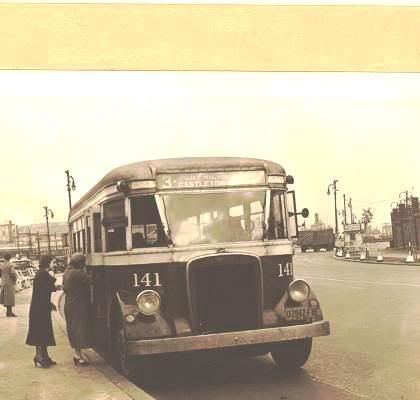
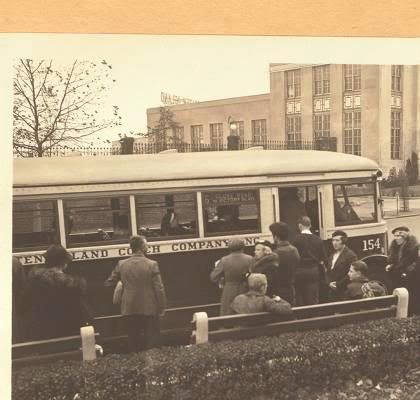
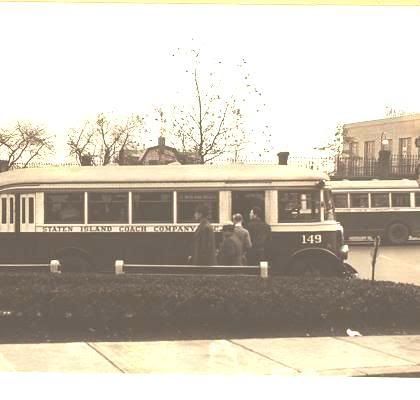
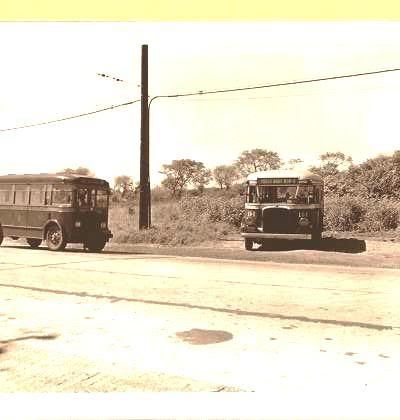
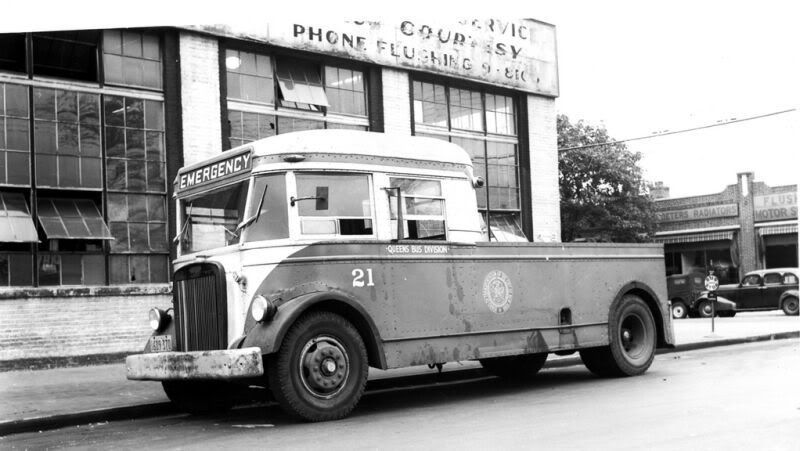 |
|
| Back to top |
|
 |
|
|
You cannot post new topics in this forum
You cannot reply to topics in this forum
You cannot edit your posts in this forum
You cannot delete your posts in this forum
You cannot vote in polls in this forum
You can attach files in this forum
You can download files in this forum
|
Powered by phpBB © 2001, 2005 phpBB Group
|

























